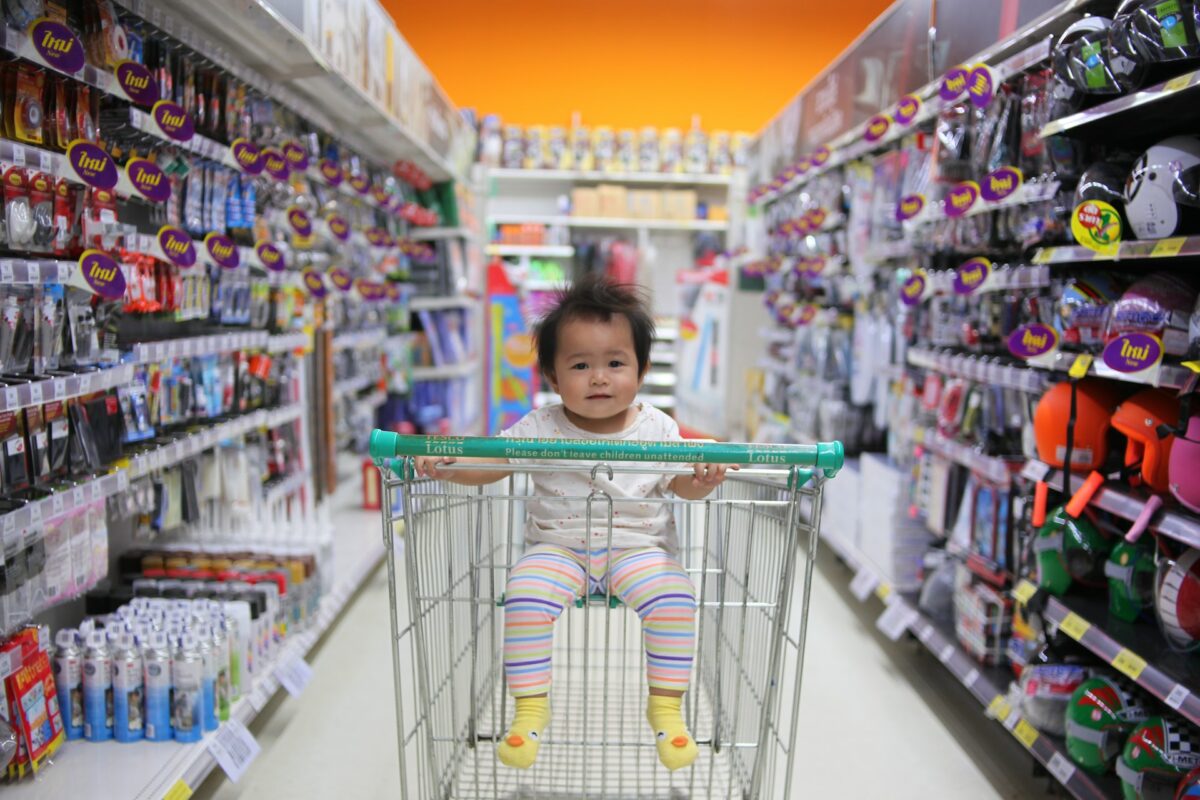It was not too long ago when several business pundits decreed that brand loyalty was dead. Their reasoning hinged on their observations that people tend to go for the latest and greatest product rather than stick with their known brand. For those brands that bought into this nonsense, too bad for you. Brand loyalty is not dead. There is ample evidence that people are still loyal. However, people may have switched loyalties during the pandemic for a variety of reasons such as availability, omnichannel shopping approaches and inflationary prices.
Recently several high-tech service brands in earnings calls have offered that brand preference is making a huge difference in profitability.
PayPal stated the following in its latest Earnings Call:
And clearly, there is no other digital wallet close to us in terms of scale, and there’s overwhelming consumer preference for PayPal in those wallets. And our super app is showing extraordinarily promising early results. Now we only rolled that out fully in the middle of October across all of iOS and Android, so we’re 3 or 4 months into it. But what are we seeing? We’re seeing double the average revenue per active account when somebody uses our app versus just checkout. When somebody uses the app their propensity to churn is 25% less.
Additionally, PayPal said:
And in fact, in some studies, it would suggest that PayPal is second only to debit in front of credit in terms of preference from consumers. And as I noted earlier, like you’re beginning to see more and more preference for brand ecosystems. And, we think that’s only going to become more relevant as we go forward, which is part and parcel to why we’re emphasizing our digital wallet strategy so much because when someone is using our app, is using our digital wallet, they’re much more likely to be engaged with us in other parts of our ecosystem, including off-line transactions.
Let’s understand the relationship between brand preference and brand loyalty. Preference and loyalty are not the same. A brand must have brand preference if it wants to grow brand loyalty. Brand preference is the necessary stage for reaching True Brand Loyalty.
Think of a ladder. The goal of marketers is to move your brand up the brand loyalty ladder, the pinnacle of which is True Brand Loyalty.
Rungs on a brand loyalty ladder start from non-usage and lead up to True Brand Loyalty. The context for the brand loyalty ladder is the audience for the brand. This ladder is a reflection of the strength of the customer’s commitment to the brand relative to competitive offers. Moving the customer up the ladder from commodity consideration to True Brand Loyalty can have a big impact on revenues and profitability.
PayPal stated that their strategy is aimed at building brand preference. And, building preference leads to True Brand Loyalty. True Brand Loyalty leads to quality revenue growth which, in turn, leads to enduring profitable growth.
The Role Of Sales
Every brand desires sales. But, there are two kinds of sales: quantity of sales and quality of sales. Brands must build both. For example, a lot of high tech brands focus on building quantity of sales, in other words gaining subscribers or daily users. Think of the ongoing streaming wars. The headlines are always about the number of subscribers. However, at some point, as Netflix is finding out, there is a limit to the quantity of subscribers. Quality of sales reflects building sales based on brand loyalty. Brand loyalty anchors quality of sales. This is why it is critical to move customers up the brand loyalty ladder.
Commodity consideration is the first rung on the brand loyalty ladder. With commodity consideration, customers view a set of brands as being basically the same. The customer is actually indifferent and is willing to consider any of these brands. “Willing to consider” is not the same as “I would put this brand on my short list of preferred brands.” Commodity brands deliver the very basics – the greens’ fees – of the category. In most cases, the only differentiator is convenience and price.
The next rung on the brand loyalty ladder is Short-list brands. Short-list brands are the small set of brands that are among the customer’s top three choices. There are reams of data indicating that most people tend to have a set of three brands; more than three brands being too many. Being on the customer’s short list is good, but not good enough to be a truly strong brand. It is better to be the preferred alternative within the short list.
The stage of building brand preference is the next three rungs of the brand loyalty ladder: Top Three Preferred Brands, Second Choice and First Choice. Top Three Preferred Brands means each of the brands is a preferred brand. If your brand is one of three, your brand can only be picked 33% of the time. Second Choice and First Choice reflect the customer’s “ranking” of these brands. Obviously, you want your brand to be the First Choice.
A preferred brand is a favorite brand. Preference is a much stronger concept than satisfaction. For example, customers may be satisfied with a particular brand of printer. However, they may also be satisfied with two or three alternative brands. When shopping for a printer, they may default to price. Satisfaction is necessary but it is not sufficient. You may have a car that needs service. The service you receive is satisfactory. However, you may be unhappy with the car brand because it needed this service.
The ultimate goal is to move a customer from preference to True Brand Loyalty. Loyalty is not the same as frequency. Too many so-called loyalty programs build frequency but do not really build loyalty. Frequency can be bought by bribes. Bribes build deal loyalty not real loyalty. As many streaming brands now find, having a free trial period does not always translate to subscribership. Free-trial users may be going for the deal in order to watch special content.
True Brand Loyalty is based on a customer’s commitment that this brand is the best value, where value reflects the total brand experience (functional, emotional, social benefits) relative to the total costs (money, time, effort)
True Brand Loyalty is the highest rung on the brand loyalty ladder. True Brand loyalty brands are preferred even though there may be a price premium when purchasing. Imagine that a customer’s second choice brand costs 10% less than the first preferred, favorite brand. Data show that a truly brand loyal customer will still choose the preferred brand even though the second choice brand is 10% less. The ultimate goal is to increase the number of people who feel this way. Again, data show that a brand does need a lot of these true brand loyal customers. Having 10% of your customers as true brand loyalists can be very profitable. There are examples showing that 10% core loyalists can account for 40%-50% of sales. Several years ago, Macy’s noticed that it hard core loyalists in its loyalty program accounted for 49% of sales.
Reviewing Snap’s latest earnings, The Wall Street Journal wrote that one of the reasons Snap is “faring better than Meta” may be Snap’s user preference. “For years now, Snap has touted its popularity among a younger crowd. That appears to be paying off now more than ever as Meta deals with attrition of some of its younger users. Snapchat daily active users grew 20% year-on-year and 4% sequentially in the fourth quarter.” The Wall Street Journal commented that investors, spooked by Meta’s ‘gloomy” results and outlook, punished Snap with a sell-off. “This time investors were wrong. On Thursday, Snap reported fourth-quarter revenue growth of 42%. This was 12 percentage points above the midpoint of its guidance and more than 10 percentage points above Wall Street’s estimate.” Preference is a big deal.
Additionally, The Wall Street Journal commented on Twitter’s recent unremarkable earnings. Somewhat bewildered by Twitter’s ad engagement strategy, The Wall Street Journal pointed out, “Twitter’s superpower is its highly engaged superusers. The people who love Twitter would probably tell you they can’t live without it. But their value is in their loyal usage, not their ad engagement. Unlike those of Instagram, YouTube or TikTok, Twitter’s most active users aren’t idling on the network in hopes of relaxation or escape. They are there to work, to learn or to get specific information they need. That kind of use case doesn’t seem like the best place to expect customers to engage with more ads….”
At some point is a brand’s lifespan, there are no more costs to cut, no more ads to run, limited users to reach. The successful brands will be the ones that focus on the quality of sales and the True Brand Loyalty of users. True Brand Loyalty requires that brands build brand preference, moving customers up the brand loyalty ladder.
In a loyalty program report, Deloitte, the global business service company, wrote that a first priority for loyalty programs is to drive specific behaviors that will help brands reach financial, customer and brand objectives. Knowing which behaviors will move a customer up each rung of the brand loyalty ladder is a key to success. Or as Deloitte stated, “(Loyalty) is a tangible value creation lever… that is becoming increasingly essential across industries.”
Climbing revenues, brand value and profits require customers climbing the brand loyalty ladder.
Contributed to Branding Strategy Insider by: Larry Light, CEO of Arcature
At The Blake Project we are helping clients from around the world, in all stages of development, redefine and articulate what makes them competitive at critical moments of change through our in-person or online strategy workshops. Please email us for more.
Branding Strategy Insider is a service of The Blake Project: A strategic brand consultancy specializing in Brand Research, Brand Strategy, Brand Growth and Brand Education




